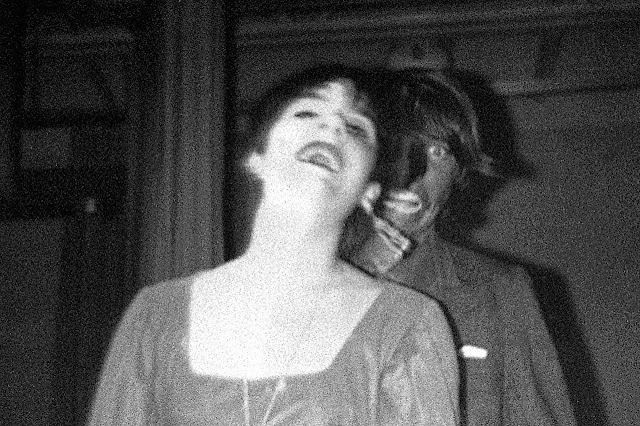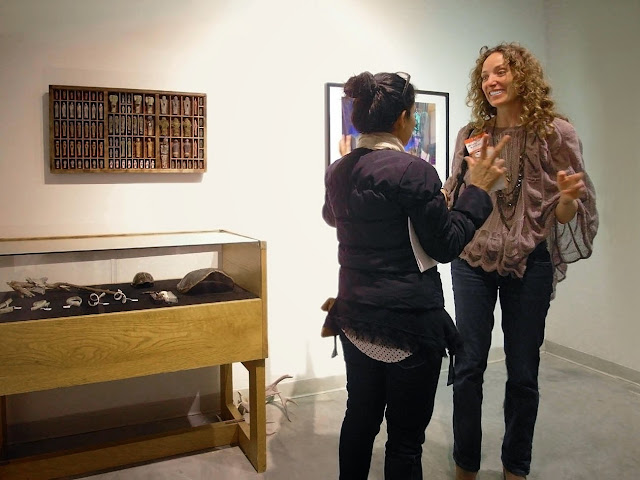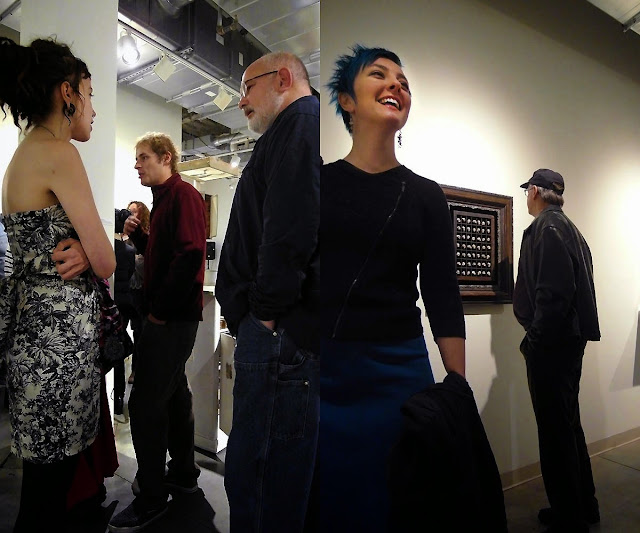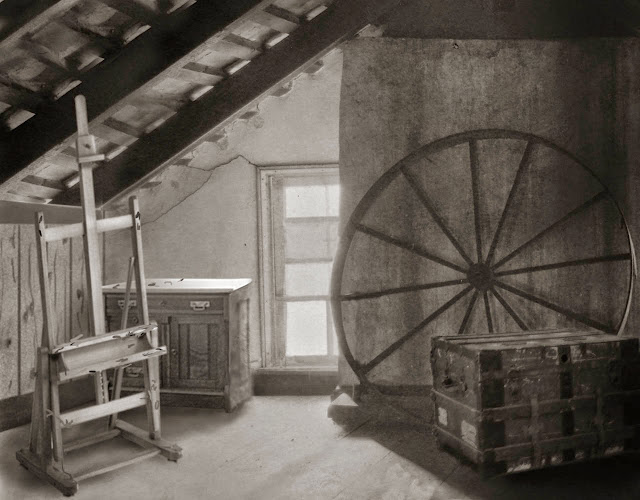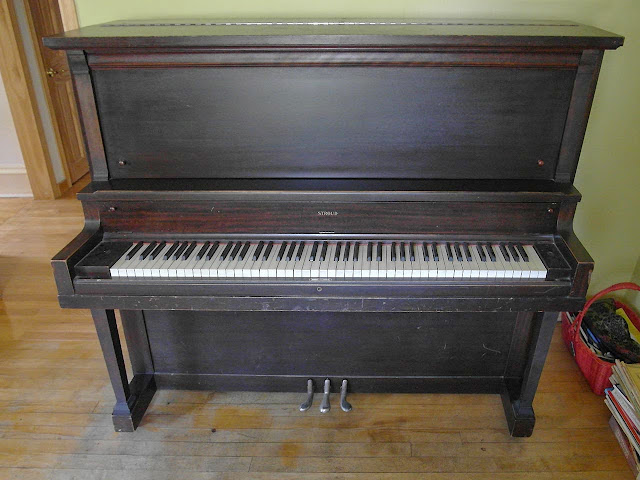This is chapter 21 of The Matriarchy, a serial fiction novel on FITK
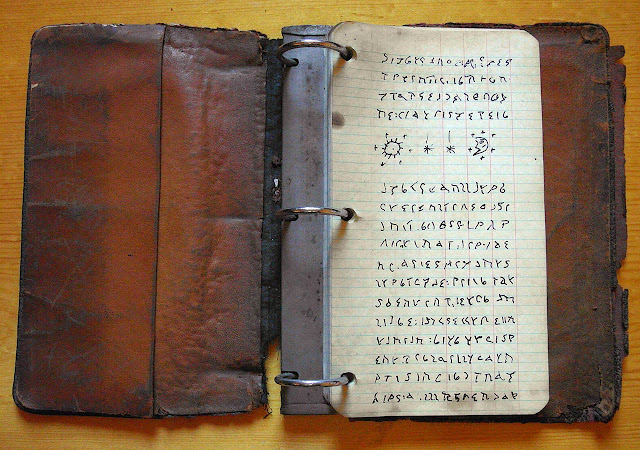
Mary sat down and began to look at the book which Tina had given her. It was small, a grimy leather-bound ledger wrapped in a crumbling cover. Its pages, although yellowed, were still crisp and covered with vaguely mid-eastern characters: Hebrew, Aramaic, Phoenician, augmented with a few diagrams. Mary first thought was that it might be a hoax, or perhaps a spoof of some actual document from antiquity, but as she examined it further, patterns began to emerge.
“There’s something here, I need to scan these pages and run them through an analysis,” Mary said, “Some kind of punctuation is happening, there are characters are in two forms—upper and lower case.”
“I wouldn’t know where to begin,” said Sean, “And if we did find out what the characters meant, what language would it be written in?”
“I have a feeling that the content is in English—if it was Emily who wrote it. A key would help, but I think any reasonably sophisticated frequency analysis should be able to crack it. My system in Seattle could do it. I’ll use my phone to capture each page and then send them to my server,” Mary said as she took out her phone. “You must be tired of hearing me say it—I’m hungry again.”
“I’ll make us some lunch. Is tomato soup and grilled cheese OK?” asked Tina.
“That sounds wonderful,” said Sean, “I’ll give you a hand.”
“Yummy. I’m going to look at this some more,” said Mary, “I'll be there by the time lunch is ready, thanks.”
In the kitchen, Tina and Sean began to make lunch. As he opened the soup cans, Sean looked at Tina and said: “This is just like when I was little, isn’t it, Tina?”
“The bread is better… ” Tina said as she buttered, “… and the cheese. No more Wonderbread and Velveeta. The tomato soup hasn’t changed, though, but I usually add some basil,” Tina put the sandwiches on the griddle. “Sean, do you think Mary is up to this? She seems to be aware of what she’s doing, but I’d feel terrible if anything bad happened to her.”
“I don’t know if she is. She’s still the same person I’ve always known. She has never lacked nerve,” said Sean, “But I understand what it is that you’re saying. When I saw her in the Ice Cave today… I mean, she was actually glowing, with arcs of light around her fingertips. She was in a trance for several minutes but when she came back she wasn’t fazed a bit. Most people would have had a nervous breakdown if that had happened to them,” Sean said, “From what I know of her past, all of her life has been a struggle against people who have told her ‘you shouldn’t’, ‘you can’t’, ‘it isn’t allowed’. And yet, in the end, she’s always gotten her way. This thing, whatever it is that she’s up against, it’s the kind of challenge she’s always looking for.”
“How about you, Sean? Was it a struggle to be able to love her?”
“I thought about it. For a while, when I was with Molly, I told myself that I shouldn’t allow myself to be interested in Mary, that it was wrong, that she was beyond me. Maybe she is. But once Molly left I couldn’t pass up the chance. She is a wonderful woman. So now, here we are… and here she is.”
“Should I set the table?” Mary said as she walked into the kitchen.
“Of course, dear,” said Tina, “The soup bowls are there—in the bottom cupboard.”
As they ate, Mary seemed preoccupied. Tina spoke: “It might be time to have a look at Emily’s studio,” she said, “You’ll have to figure out how to open the door. The lock is broken, you might have to break it to get in.”
“When’s the last time anyone was in it?” asked Sean.
“1946… ” said Tina, “… When Emily left.”
“No one’s been in it for nearly 70 years?” asked Mary, “Really?”
“Well, it’s not much more than a storeroom in part of the attic; there is no heat and just a single window for light. After she went back to New York, Henry latched the shutters from the outside so the window panes wouldn’t get broken. He would have never dreamt of disturbing her things; he was always hoping that she would come back some day.”
“Now I am really intrigued,” said Sean, “This is most extraordinary. Are you sure Emily won’t mind?”
“I don’t really know. But it has to be done at some time, or else the things in her studio will just be smashed when the house is torn down,” said Tina, between taking bites of her sandwich, “There are tools in the garage.”
Roger Ramsen was in agony. His indigestion, which had been flaring up, had taken a turn into nausea. Suddenly, pains shot down his left arm. He pressed the page button on his desk phone.
“What is it?” answered Sally O’Donnell, who had been reading beside the pool.
“Sally… my heart, heart attack…” croaked Roger.
“Oh shit. Hang up the phone and I’ll call the paramedics,” shouted Sally.
When the line cleared, Sally called 911 and reported the situation. She then went to unlock the front door and used the remote to open the front gate for the ambulance. By the time she got to Ramsen’s office he was lying on the floor, deathly pale.
“They’re on the way, what can I do for you?” Sally said, leaning down to the stricken man.
Roger Ramsen could only gurgle in reply.
The door to Emily’s old studio was secured with an old-fashioned keyhole-style lock. When Sean tried to turn the handle it was obvious that the mechanism had broken and was completely jammed, even though the deadbolt wasn’t latched.
“I’d hate to bust up a nice antique door, any suggestions?” said Sean.
“Let me look at that,” Mary said. She knelt down and aimed her flashlight into the keyhole. She saw that a piece of the mechanism had fallen down inside the lock. She grabbed a small screwdriver and began to fish around in the opening.
“I think if I can get this piece out of the way… ” she said, “… just a little bit more… ”
A sharp click came from the lock, the door opened a crack, then stopped.
“The hinges are rusted, put a shoulder on it, Sean.”
As Sean pressed, a grating sound was followed by an eerie metallic squeal as the door opened with difficulty. The shutters allowed several slivers of light into the room, giving the darkened room a theatrical quality. Sean made his way to the window and found that it loose in its frame. When he lifted the lower half it was obvious that the sash cord had broken.
“Is there something we can use to hold this window up?” he asked Mary.
“Use this hammer,” Mary replied, handing him the tool.
“Still have that screwdriver? I think I can use it to lift the latch on the shutter.”
When Sean tried to force open the shutters they broke from their hinges and crashed to the ground.
“Are you kids all right up there?” shouted Tina, from the stairwell.
“It's OK Tina, just a little snag with the shutters,” Mary replied.
The room was now bathed in light. The thick layer of dust covered everything in the room. There was an easel, an old trunk, a nightstand, and, somewhat incongruously, a large wheel with spokes.
“Where do we begin?” said Sean, as he wiped his hands on his pants.
“We’ll need some wet towels to deal with this dust. I’m feeling a sneeze attack coming on.”
A cold gust of wind came through the open window.
Fiction


 Image: The Weaver
Image: The Weaver




